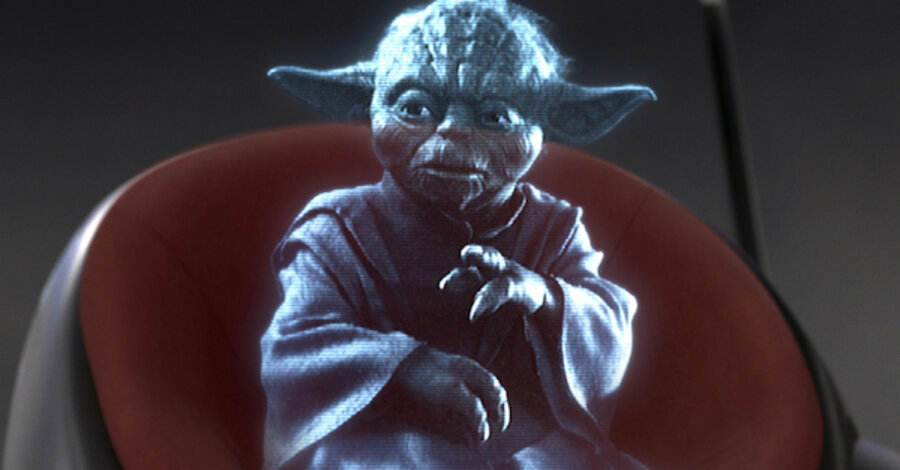Are holograms the next step for 3D tech?
Loading...
Forget regular old 3D movies, which have crowded the marketplace with alarming alacrity in recent months. Forget even 3D TV. How about a 3D hologram – a three-dimensional telepresence, of the kind once seen only in the most speculative of science-fiction flicks? The technology might be even closer than you think.
The current issue of the science journal Nature features an extensive report from a group of Arizona researchers who succeeded in creating a real-time image – one that can be viewed without glasses – from multiple angles. (Just like in "Star Wars"!) The image, the researchers said, is recorded using a battery of cameras:
The more cameras that are used, the more refined the final holographic presentation will appear.That information is then encoded onto a fast-pulsed laser beam, which interferes with another beam that serves as a reference. The resulting interference pattern is written into the photorefractive polymer, creating and storing the image. Each laser pulse records an individual "hogel" in the polymer. A hogel (short for holographic pixel) is the three-dimensional version of a pixel, the basic units that make up the picture.
"Holographic telepresence means we can record a three-dimensional image in one location and show it in another location, in real-time, anywhere in the world," lead researcher Nasser Peyghambarian said in a statement. The technology could be used in a range of situations, from advertising to mapping. It could also be used for home entertainment. Imagine being able to watch "Monday Night Football"l in holographic form. Or playing holographic Mario.
The mind reels.
Of course, it's been an exceptionally big year and a half for 3D movies and TV.
By the end of 2010, Toshiba is expected to release on the Japanese market a 3D television that uses some sort of autostereoscopy 3D technology – allowing users to watch 3D content without having to pull on a pair of those pesky glasses. "Many people don't like to wear glasses to watch TV for a long time, especially people who must wear 3-D glasses over regular glasses," a Toshiba rep pointed out in August.
True. Thus the forthcoming Nintendo 3DS, the hand-held system set for release in March. The device is a replacement for the aging DS hand-held, and will ship with two screens – one a touchscreen and the other a widescreen display capable of transmitting glasses-free 3D imagery. The Nintendo 3DS will reportedly get a price tag of about $300, relatively pricey for a hand-held gaming device, but relatively cheap for 3D tech.





